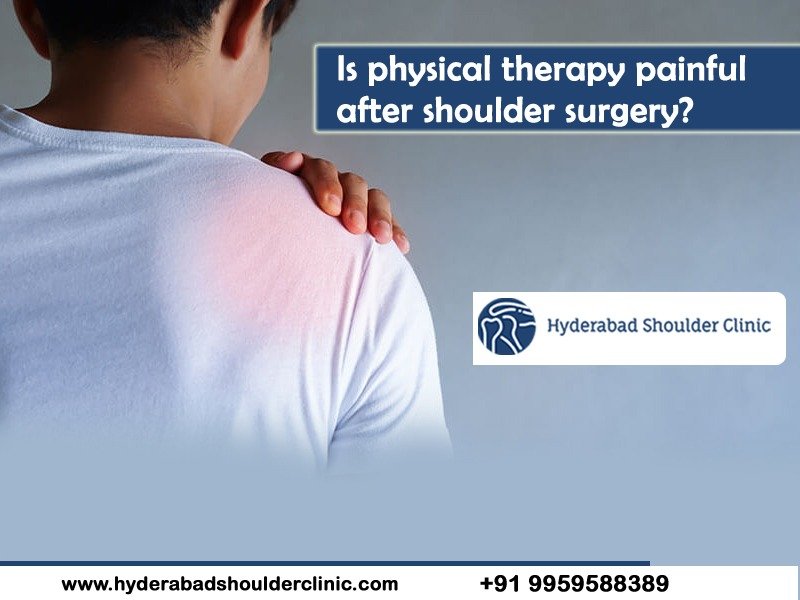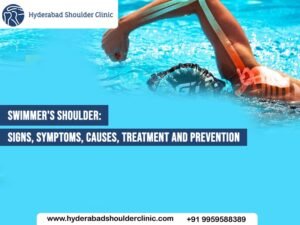Shoulder pain is one of the most deliberating conditions that can restrict your movements. It may be caused due to a variety of medical reasons. You may be unable to perform even basic tasks like taking a shower, changing clothes, or combing your hair due to pain.
If you have shoulder pain, a physical therapist may suggest physical therapy to help relieve pain and improve the strength and mobility of your shoulder. However, in some cases, shoulder damage may be so severe that biological treatment cannot restore your shoulder’s normal function. You may need to undergo shoulder surgery to get back to normal in such cases.
Your shoulder is likely immobilized for a while following shoulder surgery. You may need to wear a sling to protect your shoulder while healing. As a result, your shoulder’s muscles can weaken, and the shoulder structures may become tight.

However, you will probably need physical therapy to get back to normal activities after shoulder surgery. Therefore, your rehabilitation program must be tailored to your specific needs based on the exact type of surgery you had.
Is physical therapy painful after shoulder surgery?
It is possible to experience pain during some sessions of physical therapy. Your physical therapist will instruct you to prevent extending the shoulder more than 60 degrees as it heals as a preventative measure.
The muscles that have been repaired are rarely damaged by physical therapy. However, if you experience pain, you might consider applying a cold compress and taking anti-inflammatory medicine.
Here is a list of common shoulder surgeries that may require a physical therapy expert to facilitate rehabilitation.
Rotator Cuff Repair
Typically, your rotator cuff consists of 4 muscles located in the deep shoulder region and is responsible for controlling the movement of your shoulder. These muscles can fray or tear due to trauma in accidents, injuries while playing contact sports or simple wear and tear issues.
Both arthroscopy and open procedures are used to fix rotator cuff tears. In addition, the range of motion and your shoulder strength may be improved with physical therapy following rotator cuff repair.
After a rotator cuff repair, you may need to undergo physical therapy, which will take around four to six weeks (maybe longer). To maintain your arm’s function and long-term gains, your physical therapist may instruct you on exercises to do.
Labrum Repair
The labrum is a small tissue that lines your shoulder socket. Trauma such as a fall or sports injury can cause it to tear. When a labrum is pulled, the shoulder may be unstable or dislocated repeatedly.
A labrum may be torn at various locations. For example, if the front shoulder part is torn, it is called a Bankart tear. If the labrum is torn on the top, it is called a SLAP tear.

A torn labrum may need to be repaired surgically to stabilize the shoulder joint. In addition, doctors may suggest physical therapy after the surgery to restore mobility and return to regular activities.
Subacromial Decompression
When your shoulder impingement symptoms fail to resolve with conservative treatment, a subacromial decompression may be necessary. This surgery involves removing a portion of the subacromial bursa to give extra space for rotator cuff tendons.
Many patients can recover from the surgery without any physiotherapy. Still, in some cases, physical therapy is essential to restore mobility and strength of the shoulder after the surgery.
Shoulder Replacement
In severe arthritis and trauma, a surgeon chooses to perform shoulder replacement. The surgery involves removing the damaged shoulder parts and replacing them with prosthetic components.
Total shoulder replacement, partial shoulder replacement and reverse total shoulder replacement are common shoulder replacement surgeries. Following a shoulder replacement, physical therapy & rehabilitation is necessary, and it differs based on the procedure done.
Fracture
If you have broken a bone in your shoulder, then the surgeon may need to perform surgery to fix the bone. After the surgery to restore your shoulder’s range of motion and strength, the doctors may recommend physical therapy.
Shoulder Manipulation Under Anesthesia
When a range of motion exercises cannot relieve a frozen shoulder, the doctor may recommend shoulder manipulation under anaesthesia (MUA). As this procedure is not actual surgery, it doesn’t involve any cuts on the body. Instead, your shoulder joint is forcefully adjusted to bring back its range of motion when you are under anaesthesia.

Following an MUA procedure, a physical therapy program is essential to maintain your shoulder range of motion gained through the procedure.
Biceps Tendon Repair
Usually, a ruptured biceps tendon may not affect your ability to move your arm or shoulder, but it may give you a disfiguring appearance in your upper arm.
As a result, some individuals want to repair their biceps tendon. Physical therapy may be necessary to ensure that the arm is used typically following the surgery.
After shoulder surgery, it is vital to ask the doctor whether physical therapy is necessary to improve the functions of your shoulder after the operation. If it is required, work with skilled and experienced physical therapists so that you can regain your shoulder functions and recover faster.





